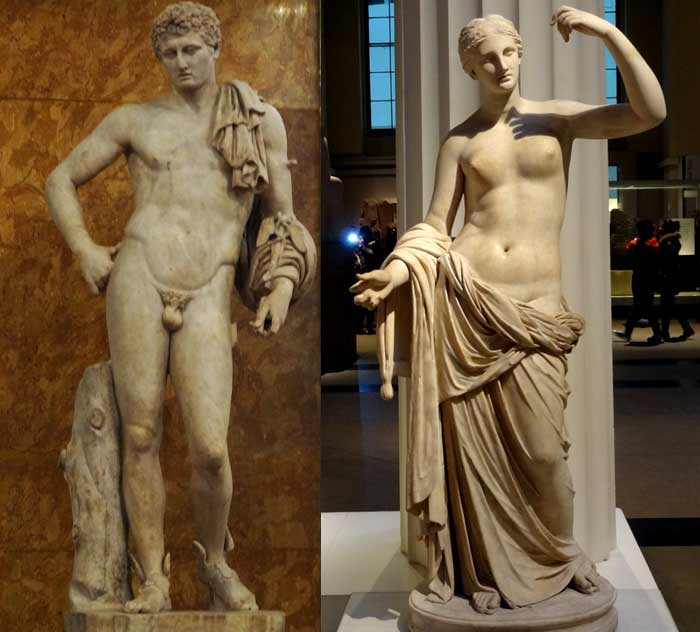Contrapposto
Contrapposto
Anatomy Lesson 2
The Italian term contrapposto means “counter-poise”. It is a graceful and elegant pose.
Knowledge of this pose is essential for drawing realistic and natural body position in figurative artworks.
Contrapposto is a very common pose, as it helps to reduce the tension in one leg while engaging the other. This way, muscles in one part of a body can rest while the muscles and bones of another part bear the body’s weight.
In contrapposto, a human figure stands with most of its weight supported by one leg, while other leg just helps to keep balance. The relaxed leg is slightly bent, and its knee appears a bit lower than the knee of the engaged leg.
The axes of the shoulders and arms in contrapposto are not parallel to the hips and legs. That is why contrapposto is both a dynamic and relaxed pose.
Many fine artists and sculptors, starting from Ancient Greece and then in the Renaissance, used contrapposto in their figurative works of art. This pose is still widely used by artists today, so understanding its principles is as important as ever.
Here are some good examples of contrapposto.

In the contrapposto position, the body’s center of gravity is positioned directly above the engaged footprint. If it is outside the footprint, the body will be out of balance. The center of gravity is, in fact, located in the middle of the pelvis, slightly higher than the pubic bone.
The spine line in contrapposto is curved. This is to balance the tilt of the pelvis and keep the body’s center of gravity above the footprint.
The axis of a pelvis in contrapposto is tilted diagonally. The line of the engaged leg is tilted; it connects the pelvic axis and the supporting foot.
In contrapposto, the line of shoulders is tilted in the opposite direction to the pelvis. The collarbones follow the tilt of the shoulders’ axis.
The axes of shoulders and the pelvis are perpendicular to the spine line.
The ribcage is also tilted in the direction of the spine. It is shifted to the side of the engaged leg. That is why one side of the body is compressed, while the other side is stretched.
The ribcage lower end is much closer to the top of the pelvis on the side of the engaged leg, while it is further from the pelvis on the other side. The distance between the lower edge of the ribcage and the top edge of the pelvis on the engaged side could be as small as one inch.
[ The full lesson is avaibale to Anatomy Master Class members ]
To learn more about contrapposto, enroll in the Anatomy Master Class
Simple Pricing, No Surprises
One-time payment - Only $97 USD
ENROLL NOW



